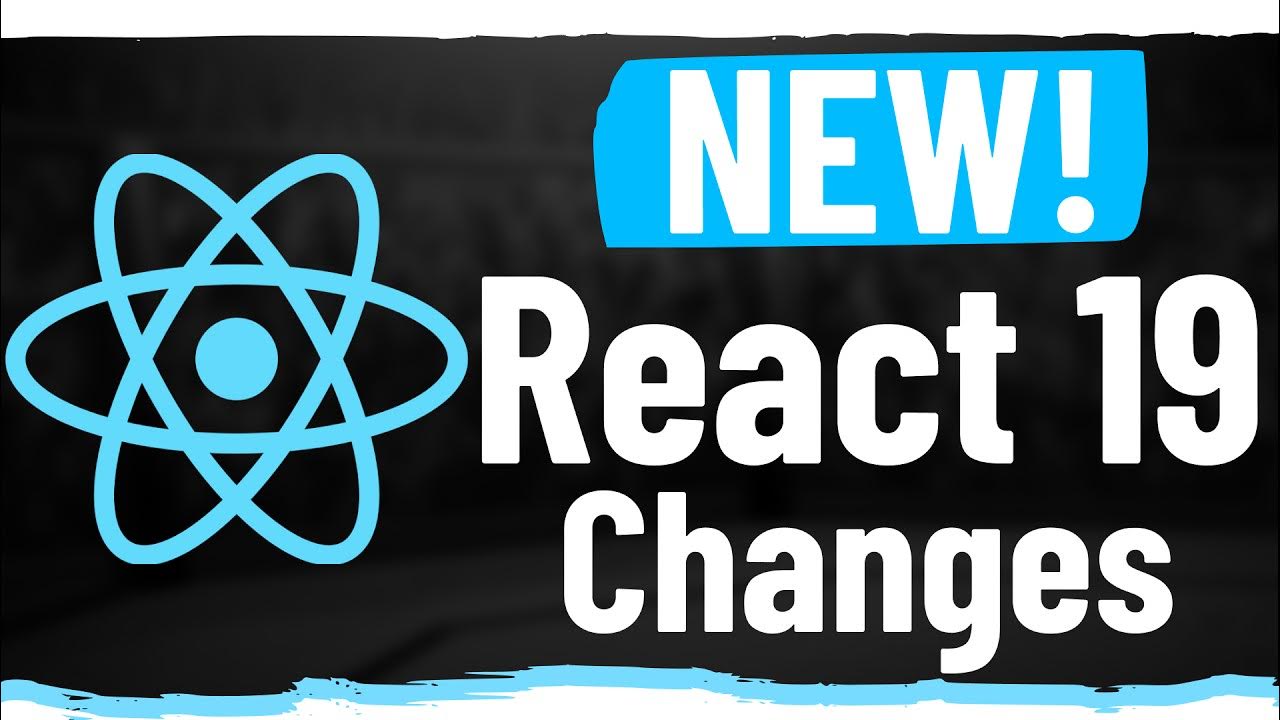React 19 STABLE - I Can't Believe They Changed This
Summary
TLDRReact 19 introduces powerful new features that enhance server-side rendering, form handling, and state management. Key updates include server components for simplified data fetching, server actions for seamless form submissions, and hooks like `useActionState` for managing request states. The `useOptimistic` hook enables optimistic UI updates, while ref forwarding and context API improvements streamline component interactions. The React compiler also optimizes performance by reducing unnecessary rerenders. These advancements, especially when integrated with Next.js, make React 19 a more efficient and developer-friendly framework, improving both user and developer experiences.
Takeaways
- 😀 React 19 introduces server components by default in Next.js, allowing server-side rendering and data fetching without `useEffect`.
- 😀 The `use server` feature enables server actions that run only on the server, eliminating the need to set up API endpoints manually.
- 😀 The new `useActionState` hook replaces `useFormState` and helps track the pending and error states of server actions.
- 😀 The `useOptimistic` hook allows for optimistic UI updates, displaying expected outcomes (e.g., post titles) before server responses.
- 😀 React 19 simplifies the syntax for handling refs, eliminating the need for complex forwarding and type definitions.
- 😀 The new `use` hook improves the context API, allowing for easier context consumption with added flexibility and support for promises.
- 😀 React's compiler can now automatically optimize common performance bottlenecks, like expensive computations during re-renders (e.g., sorting).
- 😀 Hydration error messages have been improved to help developers troubleshoot issues more easily in Next.js.
- 😀 Server actions in React 19 are network requests triggered from the client side, automatically handled by the framework without manual API setup.
- 😀 React 19 includes a new context consumption approach where the `use` hook can be used to handle data fetching and state changes in context.
- 😀 Despite the powerful features in React 19, some optimizations, such as the React compiler, are still not fully stable in production environments.
Q & A
What is the role of server components in React 19 and how are they used in Next.js?
-Server components in React 19 allow components to run on the server by default. In Next.js, all components in the app router are server components, which means they can fetch data directly on the server without needing hooks like `useEffect`. The markup generated by these components is sent to the client.
How does React 19 handle data fetching in server components?
-In React 19, server components can fetch data directly within the component, avoiding the need for `useEffect` or other client-side data fetching mechanisms. Data is fetched on the server side, and the rendered markup is sent to the client.
What are server actions in React 19 and how do they work in Next.js?
-Server actions in React 19 allow developers to define functions that run only on the server, handling operations like form submissions and database interactions. In Next.js, server actions are used to send data to the backend without manually setting up API endpoints. They are triggered by actions such as form submissions or button clicks.
What is the `useActionState` hook, and how does it improve form handling in React 19?
-`useActionState` is a hook introduced in React 19 (previously called `useFormState`) that provides states such as `pending` and `error` for actions like form submissions. This helps manage form state more efficiently by providing automatic handling of pending requests and errors during submission.
How can `useOptimistic` hook be used to improve user experience in React 19?
-The `useOptimistic` hook allows developers to update the UI immediately with an optimistic value, assuming the action will succeed. This is particularly useful when there is a delay between submitting data and receiving the server response, as it shows the expected result in real-time.
What is the advantage of React 19’s ref handling compared to previous versions?
-React 19 simplifies the handling of refs by allowing them to be passed like regular props, eliminating the need for the `forwardRef` pattern. This results in cleaner, more readable code for components that need to forward refs.
How has the Context API in React 19 been enhanced with the `use` hook?
-The Context API in React 19 introduces the `use` hook, which allows developers to consume context values asynchronously. This provides greater flexibility when working with promises and makes consuming context easier, particularly when fetching data.
What is the role of the React compiler in React 19, and what optimizations does it provide?
-The React compiler in React 19 automatically detects and optimizes certain computationally expensive operations, such as sorting or complex calculations. This reduces the need for manual optimizations like `useMemo`, although the compiler's stability is still evolving.
How does the new `use` hook in React 19 differ from other hooks?
-The `use` hook in React 19 differs from other hooks by being more flexible. It can be used in conditions, consumes promises, and allows for asynchronous operations in a way that other hooks cannot. This flexibility makes it suitable for libraries, though it's not yet recommended for general application development.
What are some key advantages of React 19's new features for developers?
-React 19's new features, such as server components, server actions, and improved hooks (`useActionState`, `useOptimistic`, `use`), offer several advantages: simplified data fetching, better server-side integration, improved state management, and enhanced UI responsiveness. These features streamline common tasks and reduce the need for boilerplate code, making development faster and more efficient.
Outlines

This section is available to paid users only. Please upgrade to access this part.
Upgrade NowMindmap

This section is available to paid users only. Please upgrade to access this part.
Upgrade NowKeywords

This section is available to paid users only. Please upgrade to access this part.
Upgrade NowHighlights

This section is available to paid users only. Please upgrade to access this part.
Upgrade NowTranscripts

This section is available to paid users only. Please upgrade to access this part.
Upgrade Now5.0 / 5 (0 votes)





